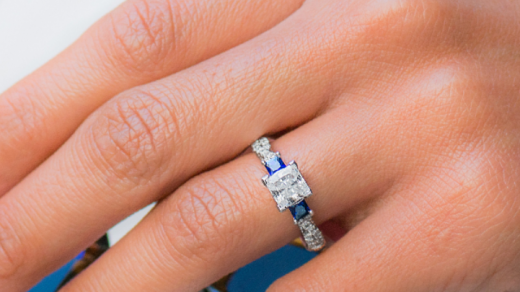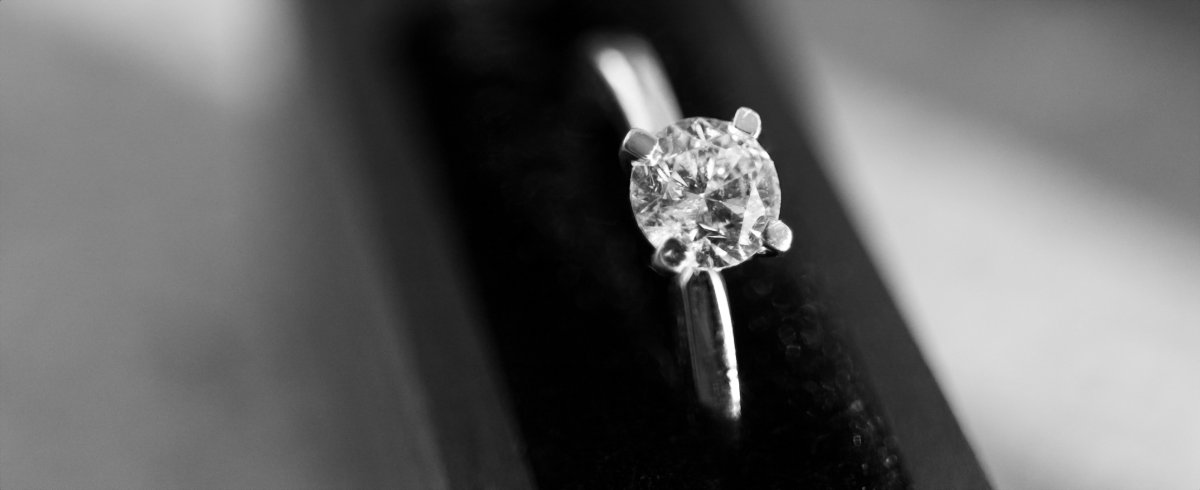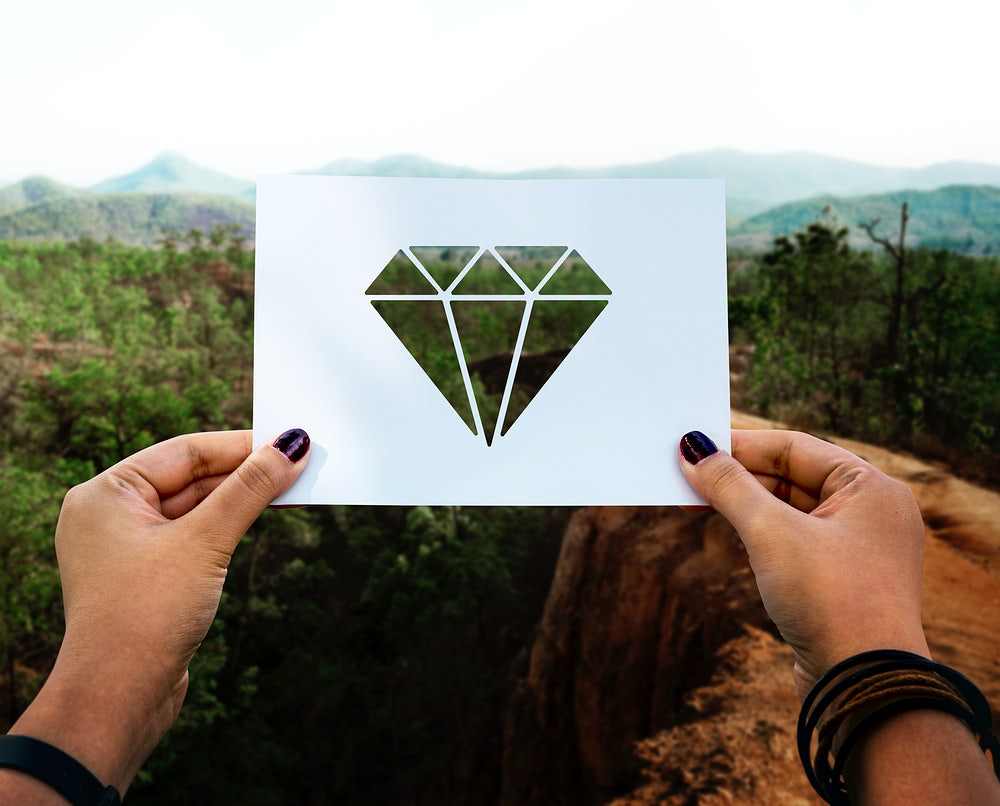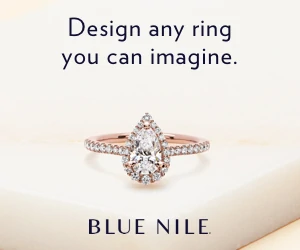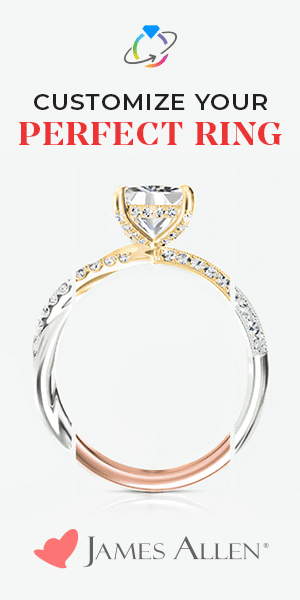Let’s say you want to buy a nice sparkly stone.
The seller tells you it is a diamond, weighs 1 carat, and that the stone is completely colorless.
The stone also apparently has no inclusions.
How will you know if any of those claims is correct?
Those descriptions may or may not be accurate.
He may not even be trying to pull one over on you.
Maybe the seller doesn’t even know that the stone is in fact a lab grown 1.09 carat F color SI1 diamond?
Whilst you may at first be happy to find out the stone is bigger than one carat, I don’t think you’d feel the same about the stone’s clarity being a lot worse than you were initially led to believe.
The stone would of course be worth much less than whatever the asking price was.
Let’s give the seller the benefit of the doubt.
What if he is not trying to mislead you but just had the wrong information?
Well, all this kind of uncertainty is easily avoided with a document issued by a reputable gem grading laboratory.
This document is called a diamond grading report. It gives you the exact description of the diamond based on a careful examination by a trained professional.
Grading reports are often talked about as “Certs” or “Certificates”. The correct term is grading report, though there are various names used by different labs to differentiate between different types of reports.
Some of those names I list below.
Once furnished with a grading report no one will have to try and remember the details of a stone. It’s all there in black and white.
If you want to be sure you are getting what think you’re getting buy a diamond that comes with its very own grading report.
Of course there are a number of different labs. But if you make sure the grading report was issued by a reputable lab you will be on the right track.
Here are the main ones that issue grading reports in the USA.
GIA
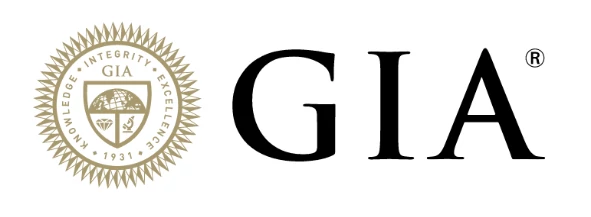
The Gemological Institute of America
gia.edu
The Gemological Institute of America (GIA) issues diamond grading reports for the majority of natural diamonds. It is a name recognized worldwide. From diamonds, and colored stones to pearls GIA grades all precious gems, and have even started accepting lab grown diamonds for grading.
GIA, established in 1931, is a nonprofit institute run for public benefit and there is no doubt that it leads the way in gem and jewelry education.
Students from all over the world studying with GIA as a way of entering the jewelry industry. You may see the letters GG after a jeweler’s name. This indicates that they have completed GIA’s diploma as a Graduate Gemologist.
The course teaches gem grading and identification and is the industry’s highest professional credential.
Diamonds are graded at GIA’s Gem Trade Laboratory. These are some of the reports they issue
- The GIA Diamond Grading Report is the staple of the diamond industry. It includes an assessment of the 4Cs – Color, Clarity, Cut, and Carat Weight – along with a plotted diagram of its clarity characteristics. It has a graphic representation of the diamond’s proportions. It includes a cut grade for standard round brilliant cut diamonds.
- The GIA Diamond Dossier® is used for smaller diamonds. To have this report issued diamonds must be under 2ct but no smaller than 0.15ct. The report includes an assessment of the 4Cs – Color, Clarity, Cut, and Carat Weight and a laser inscription of the GIA report number on the diamond. This way you can match up a diamond to its dossier.
- The GIA Diamond Origin Report also includes a complete assessment of the 4Cs: Color, Clarity, Cut, and Carat Weigh and a diagram with a plot of the diamond’s clarity characteristics. This report is differentiated from the others (and its name indicates as much) in that it includes a confirmation of geographic origin. Diamonds issued with this report will also get a laser inscription of GIA report number. This service is only for eligible earth made diamonds, weighing no less than 0.15ct, which have gone through rough analysis by GIA prior to diamond polishing.
- The GIA Diamond Report Check is available for all GIA reports, providing you with an additional level of assurance. With Report Check, it’s very easy to confirm that the information on your report matches the GIA database.
- The GIA Laboratory Grown Diamond Reports and Services reports 4Cs color and clarity specifications for lab created diamonds. All LGDR reports include a QR code and a link to an educational page so you can learn more about laboratory-grown diamonds, including how GIA differentiates them from natural diamonds. Laboratory-grown diamonds are laser-inscribed with the GIA report number and the words “LABORATORY-GROWN” to ensure that consumers can clearly differentiate the product and fully understand their purchase. LGDR reports state that the stone was created by either the chemical vapor deposition (CVD) or high pressure, high temperature (HPHT) method and whether it may include post-growth treatments to improve color.
AGS
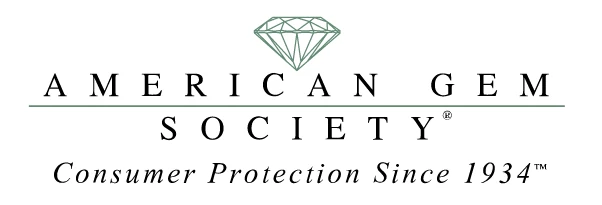
The American Gem Society
www.americangemsociety.org
The American Gem Society (AGS) was founded in 1934. One of the founding members was Robert Shipley who a few years earlier (in 1931) had established GIA. The goal the founding jewelers had was to create an organization which would help protect the jewelry buying public from fraud and false advertising. The society has grown to include approximately 3,000 jewelers, retailers, suppliers, individual titleholders and affiliates. These have all joined the American Gem Society as they have dedicated themselves to consumer protection, ethical business practices, and development and maintenance of superior gemological skills and knowledge.
Only one in twenty jewelers have met the exacting requirements necessary for membership with the AGS. To become a member of the AGS, every member has to go through a peer-reviewed application process. Every year they also have to complete a recertification exam. This process keeps every AGS member at the top of their game. Every AGS member has pledged to protect their customers by providing expert gemological knowledge of the products they sell, and adhering to strict ethical standards.
AGS has a laboratory where diamonds can be sent for grading.
American Gemological Society Laboratories
AGS and AGSL are often used interchangeably. AGS is the society of jewelers and AGSL is the AGS lab.
AGSL has a number of different types of diamond grading reports.
- The AGS Platinum Grading Report. AGS Laboratories uses a scientifically vetted cut-grading system based on optical physics. The diamond’s performance is determined with proprietary ray-tracing software. This three-dimensional analysis is seen as the ultimate test for evaluating the performance of light in a diamond. This is the cornerstone of the Diamond Quality Document® (DQD) and the Platinum Diamond Quality Document®. The performance-based cut grade is used by AGS for the most commonly found diamond cuts: Round Brilliant, Princess, Oval, Emerald and Cushion-shaped diamonds. All the detail of the Diamond Quality® Document as well as the patented computer-generated Light Performance map unique to each diamond are included in the Platinum Diamond Quality Document®. It’s really the ultimate grading report and one of the best ways for you to quickly assess the quality of a diamond. If a diamond jeweler doesn’t want to. When you are shopping, you appreciate the value of brands you know and trust. This concept is embraced by the diamond industry as well, from the retailer to the designers who create the jewelry. For diamond companies who have developed unique and patented cut designs, the AGS Laboratories offers the opportunity to provide a specialized proprietary version of the Platinum Diamond Quality® Document. This features the company’s logo directly on the document. Brian Gavin Diamonds, for example has AGSL’s Platinum Diamond Quality Document® issued for their signature cuts.
- AGS Diamond Quality Document® (DQD) provides clients and consumers with what could be considered the most detailed information available on a diamond. The Diamond Quality Document® is one of the most popular grading reports offered, showing cut (if available), color, clarity and carat weight, as well as a diamond profile showing measurements, a custom plot with the actual facet arrangement, and inscription details. To say that it is a completely comprehensive diamond grading report would be an understatement! The Diamond Quality Document® is the industry’s only grading report that offers a three-dimensional performance-based cut grade for the Round Brilliant, Square Princess, Emerald, Oval and Cushion-shaped diamonds. The Diamond Quality Document® is also offered in a “Platinum” option which is the partnered version as mentioned above. The AGS Diamond Quality Document® is the perfect way to assess Ideal Cut diamonds.
- AGS Diamond Quality Certificate® is a super-powered grading report prepared by the AGS Laboratories exclusively for American Gem Society retail jewelers. It is a Diamond Quality Document® and a guaranty (guarantee) from the participating American Gem Society member store.
- This report was created on the understanding that a diamond grading report is an opinion of the laboratory issuing the report. So while a diamond grading report is an expert opinion it is not a guaranty from a legal perspective. The Diamond Quality Certificate® changes that. It is a legal statement from the issuing AGS retailer, guaranteeing authenticity and quality, as well as certifying the diamond cut grade, color grade, clarity grade, and carat weight of the diamond. The Diamond Quality Certificate® is authenticated and validated by an American Gem Society diamond professional — either a Registered Jeweler, Certified Gemologist, or Certified Gemologist Appraiser.
- AGS Diamond Quality Report® gives you a complete grading analysis of a diamond. This included the diamond’s profile and its measurements on a custom plot. The Diamond Quality Report® is used for diamonds that not Ideal cut diamonds. So the cut, polish or symmetry, will show a maximum grade of AGS 1 (Excellent). Though the AGS Performance-based Cut Grade covers a variety of shapes, the Diamond Quality Report® is perfect for those that are not yet covered under the system. This grading report is also good for proprietary cut diamonds where the science of light performance has not yet recorded the ideal ratios for that cut shape.
- AGS Gold Diamond Quality Report®. Many in the diamond trade use proportion-based grading for evaluating the Round Brilliant diamond cut. AGS Laboratories developed a way to accommodate this preference for those who are not up to scratch with the AGS’s cut grading system. This is the AGS Laboratories Gold Diamond Quality Report®. By adapting the cut-grade technology from a three-dimensional system to a two-dimensional system, AGS is able to present their light performance evaluation in a proportion-based report for diamond cut. You get the science of the three-dimensional diamond cut grade with the familiarity and simplicity of the two-dimensional system for the Round Brilliant cut diamond. The Gold Diamond Quality Report® is presented in a plastic sleeve with a front pocket, which contains a card with the diamond’s basic information. This makes it easy for jewelers to find the right diamond. This simplicity is the beauty of the Gold Report.
- AGS Diamond Quality Analysis® is yet another convenient pocket-sized document. This diamond report is for diamonds under 2 carats, so anything 1.99ct or under. The Diamond Quality Analysis® includes a complete grading evaluation of the 4Cs. The process of grading a diamond with the Diamond Quality Analysis® includes inscribing the AGS number on the diamond by laser for identification. This report is used when a jeweler wants a cut grade document in a convenient smaller size.
- AGS Scintillation Report The Scintillation Report is a unique and detailed report created by the American Gem Society Laboratories (AGSL). The AGSL has worked for years to refine the science behind a diamond’s sparkle. To arrive at the Scintillation Report, the AGSL had to perform hundreds of thousands of tests with different diamond cuts in varying lighting conditions. Ritani has partnered with AGSL in the creation of Scintillation Reports. This increases buyers’ confidence when choosing Ritani diamonds. Ritani uses the report to help them select round cut diamonds for their top diamonds called the Ritani Reserve diamond.
IGI
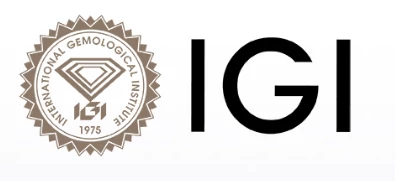
The International Gemological Institute
igi.org
The International Gemological Institute (IGI) has been around since 1975. They have labs around the world and as such can claim to be the largest network of gem grading labs. A number of innovations began at an IGI lab. IGI’s School of Gemology was the first to offer classes covering rough diamonds. IGI’s Laserscribe System Mark is also a world first. IGI was the first laboratory to issue Jewelry Identification Reports. IGI was at one point the first and the only laboratory in the world providing repair and re-cut of diamonds. IGI was the first lab to seal diamonds for protective purposes. IGI developed the first comprehensive diamond cut grading chart during its early years. Before the dawn of the millennium IGI added the following claims to fame: it was the first to permanently inscribe diamond tables using ion beam technology. IGI became fully equipped to identify synthetic diamonds of all types. IGI developed UV-VIS-NIR spectrometry to identify treated diamonds. IGI developed its own photoluminescence spectrometer which can identify HPHT-processed diamonds. IGI was the first laboratory to go worldwide under one management for its 18 offices. IGI has developed an innovative system for the grading of small diamonds. IGI was first to issue co-branded grading reports in cooperation with renowned jewelry brands. IGI introduced hands-on courses to factories for the purpose of improving manufacturing. IGI introduced supplemental courses to sales people and enthusiasts to improve their professional knowledge. IGI added the Hearts and Arrows Diamond Report to their lineup. In 2005 IGI was the first to recognize that laboratory grown diamonds would need grading reports and consequently became the primary issuer of lab grown diamond reports.
These are the reports issued by IGI:
- The IGI Diamond Report gives an assessment of a diamond’s cut, color, clarity and carat weight according to strict international standards. IGI Diamond Reports come in several different formats to serve the diverse range of consumer demand across worldwide markets. Every report is issued according to strict international standards and security features. IGI screens every diamond using state of the art technology to determine natural, laboratory grown or simulant stones. Experienced graduate gemologists conduct further assessment in controlled conditions, detailing relevant gemological characteristics according to the strictest international system. Any diamond with permanent treatments will have such treatments noted prominently in the comment section of the report. Note that IGI does not issue reports for clarity enhanced diamonds.
- IGI Hearts & Arrows Viewer Top H&A diamonds are valued for their uniqueness and quality as the ultimate in cutting precision. A percentage of well-cut diamonds, particularly near the center of the Excellent-Ideal range, show some level of cut precision, simply as a by-product of good tooling. Diamonds held to the uppermost level of craftsmanship will show extremely precise patterns. These exquisite diamonds are valued for the care, precision and consistency demonstrated in their cutting as much as any visible effects that result from this precision. There is also the attractiveness of rarity. Just as D color and Flawless clarity are rare, so is the H&A level of cut quality. The Hearts & Arrows viewer is a tool that helps gauge optical symmetry. Looking through it at the crown of a diamond you will see a pattern of arrows radiating outward in the crown of a H&A diamond. The hears pattern is visible once you turn the diamond over and view it through the pavilion. A circle of hearts can be seen in the pavilion. The arrows pattern may also be seen in certain lighting or under magnification when mounted but since diamonds are mounted with the pavilion down the H&A Viewer is the only way to see the hearts pattern. A diamond cutter must align all the facets perfectly for this to appear correctly. If any part of the diamond is even slightly off the patterns will be uneven or distorted and should not be considered a H&A diamond.
- IGI Laboratory Grown Diamond Report Laboratory Grown diamonds, also known as lab grown, man-made, created or synthetic diamonds, are diamonds made in a factory. This means they were not mined nor were they collected from an alluvial deposit. Natural diamonds are ones formed by naturally occurring processes within the Earth. The strong demand for industrial-quality diamonds used in a variety of mechanical applications has been met in part by the development of laboratory grown diamonds. These have been manufactured since the 1950’s. In recent years technological advancements have made it possible to produce gem-quality laboratory grown diamonds of commercially significant size and weight. The IGI Laboratory Grown Diamond Report provides the same information as the IGI Diamond Report. Laboratory Grown Diamond Reports issued by IGI can be easily spotted by their bright yellow color. The lab grown diamond’s girdle is laser inscribed with the report number and the words “lab grown.”

